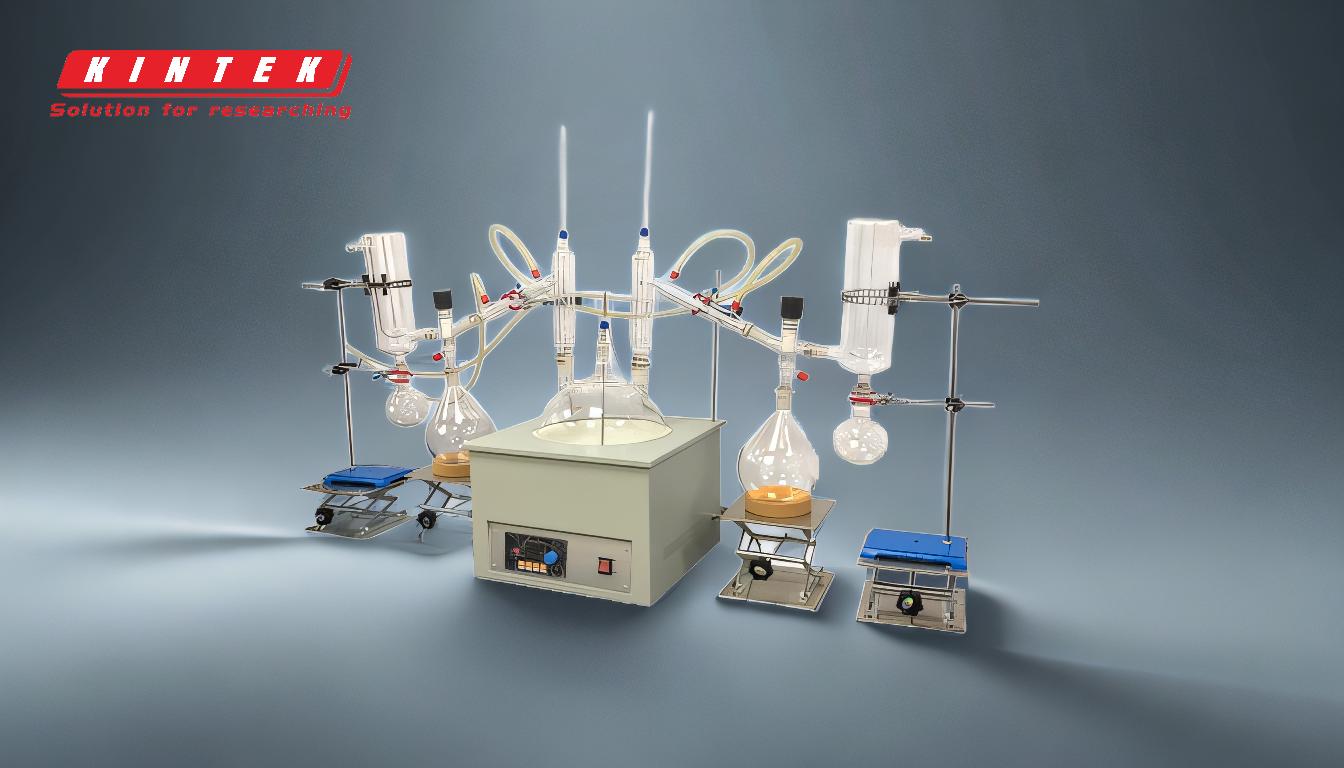Short path distillation, while efficient for certain applications, comes with several notable disadvantages. These include high equipment costs due to the need for precise vacuum sealing, difficulties in controlling the distance between evaporating and condensing surfaces, and potential material loss due to the short path design. Additionally, the process requires skilled operators, has limitations in batch size and scalability, and may lead to frequent cleaning needs and resource waste. Despite its advantages, these challenges make it less suitable for large-scale operations and more costly compared to alternatives like rotary evaporators.
Key Points Explained:

-
High Equipment Costs
- Short path distillation systems are more expensive than traditional distillation equipment.
- The high cost is primarily due to the need for advanced sealing mechanisms to maintain the required vacuum levels.
- While the initial investment is high, the potential for reduced waste may offer long-term savings.
-
Precision and Complexity in Design
- The distance between the evaporating and condensing surfaces must be carefully controlled, which adds to the complexity of the equipment.
- This precision requirement makes the equipment difficult to manufacture and increases costs.
-
Material Loss and Residue Issues
- The short path design can lead to the loss of extracted gas solvents, as they may remain in the system.
- Material residue in the path between the evaporation flask and condenser necessitates frequent cleaning, increasing operational time and costs.
- This also results in resource waste, which is less of an issue with alternatives like rotary evaporators.
-
Limited Separating Power and Speed
- Short path distillation has less separating power compared to rotary evaporators.
- The process is slower, which can be a drawback for applications requiring high throughput.
-
Operator Skill Requirements
- The process demands experienced operators due to its technical complexity.
- High skill requirements can increase labor costs and limit the availability of qualified personnel.
-
Scalability and Production Limitations
- Short path distillation is not ideal for large-scale operations due to its small batch sizes and lack of continuous feed capabilities.
- This limits its applicability in industries requiring high-volume production.
-
High Requirements for Mixture Composition
- The process is sensitive to the composition of the mixture being distilled.
- This can restrict its use to specific applications where the mixture meets the necessary criteria.
-
Market Growth Limitations
- The loss of extracted gas solvents and other operational challenges can hinder the market growth of short path distillation systems.
- These limitations make it less competitive compared to other distillation methods in certain industries.
In summary, while short path distillation offers advantages in specific scenarios, its high costs, technical complexities, and operational limitations make it less suitable for widespread adoption, particularly in large-scale or high-throughput applications.
Summary Table:
| Disadvantage | Details |
|---|---|
| High Equipment Costs | Advanced vacuum sealing increases costs; potential long-term waste savings. |
| Precision and Complexity | Requires careful control of evaporating-condensing surface distance. |
| Material Loss and Residue | Frequent cleaning needed; resource waste due to residue buildup. |
| Limited Separating Power | Slower process with less separating power compared to rotary evaporators. |
| Operator Skill Requirements | Demands experienced operators, increasing labor costs. |
| Scalability Limitations | Not ideal for large-scale or high-throughput production. |
| Mixture Composition Sensitivity | Restricted to specific mixtures meeting process criteria. |
| Market Growth Challenges | Operational issues hinder competitiveness in certain industries. |
Interested in exploring alternatives to short path distillation? Contact us today to find the best solution for your needs!










